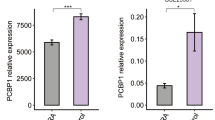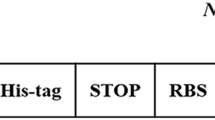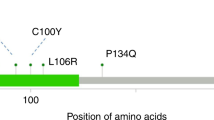Abstract
IT is generally accepted that passive cutaneous anaphylaxis (PCA) is due to an interaction of antigen with antibody “fixed” to tissues or cells, followed by the release of pharmacologically active substances, particularly histamine1. Recent experiments have shown, however, that two different pathogenetic mechanisms may be operating in PCA in both rats2 and guinea-pigs3, depending on the type of antibody used for sensitization. In the rat, PCA induced by rabbit hyperimmune antibody cannot be suppressed by antihistamine, which has suggested that PCA and the Arthus reaction “may be linked by a common aetiological factor” (ref. 4). This “factor” may be related to alterations produced by polymorphonuclear leucocytes, because this type of PCA can be suppressed by rendering rats neutropenic2. In PCA of normal rats, polymorphonuclear leucocytes phagocytose antigen-antibody complexes, become degranulated and presumably release their lysosomal contents, just as they do in vitro5. On the other hand, the PCA reaction in the rat induced by “mast cell sensitizing” or “anaphylactic” antibody can bo inhibited by a combination of antihistamine and antiserotonin (BOL-148) (ref. 6), and this has led to the suggestion that “anaphylactic” antibody is fixed on the surface of mast cells and that when it interacts with antigen the mast cell is disrupted and the pharmacologically active amines released. Against this hypothesis has been opposed, on the basis of studies with red cells as antigen, the suggestion that the interaction of antigen and antibody occurs on the inner aspect of endothelial cells7,8. Because red cells would not readily pass across the endothelial barrier, it was argued that the combination of antigen and antibody occurs within the lumen of the vessel. We have carried out an electron microscope investigation of PCA in an attempt to resolve some of these controversies.
This is a preview of subscription content, access via your institution
Access options
Subscribe to this journal
Receive 51 print issues and online access
$199.00 per year
only $3.90 per issue
Buy this article
- Purchase on SpringerLink
- Instant access to full article PDF
Prices may be subject to local taxes which are calculated during checkout
Similar content being viewed by others
References
Ovary, Z., Prog. Allergy, 5, 460 (1958).
Lovett, C., and Movat, H. Z., Proc. Soc. Exp. Biol., 122, 991 (1966).
Taichman, N. S., and Movat, H. Z., Intern. Arch. Allergy, 30, 97 (1966).
Brocklehurst, W. E., Humphrey, J. H., and Perry, W. L. M., J. Physiol., 129, 205 (1955).
Movat, H. Z., Uriuhara, T., Macmorine, D. L., and Burke, J. S., Life Sci., 1025 (1964).
Mota, I., Immunology, 7, 681 (1964).
Ovary, Z., Fed. Proc., 24, 94 (1965).
Ovary, Z. (personal communication).
White, R. G., Jenkins, G. C., and Wilkinson, P. C., Intern. Arch. Allergy, 22, 156 (1963).
Binaghi, R. A., Benacerraf, B., Bloch, K. J., and Kourilsky, F. M., J. Immunol., 92, 927 (1964).
Author information
Authors and Affiliations
Rights and permissions
About this article
Cite this article
MOVAT, H., LOVETT, C. & TAICHMAN, N. Demonstration of Antigen on the Surface of Sensitized Rat Mast Cells. Nature 212, 851–853 (1966). https://doi.org/10.1038/212851b0
Issue date:
DOI: https://doi.org/10.1038/212851b0
This article is cited by
-
Mast cells in the mammalian area postrema
Zeitschrift für Anatomie und Entwicklungsgeschichte (1972)
-
Disodium Cromoglycate, an Inhibitor of Mast Cell Degranulation and Histamine Release induced by Phospholipase A
Nature (1969)



